The future scope of Java is bright. If you’re a developer, you know that Java is one of the most popular and widely used programming languages. But will it stay relevant in the coming years? Here are some reasons why Java will continue to dominate:
- High platform independence, embodying the “write once, run anywhere” philosophy.
- It simplifies code reuse and the creation of large-scale applications.
- Its robust security model makes it resilient to many vulnerabilities found in other languages.
- Benefits from a strong community, frameworks, and libraries.
According to the TIOBE index and other measures, future scope of Java remains one of the most in-demand and highest-paying tech skills. As long as that’s the case, the future scope of Java programming language remains a valuable and well-compensated tech skill.
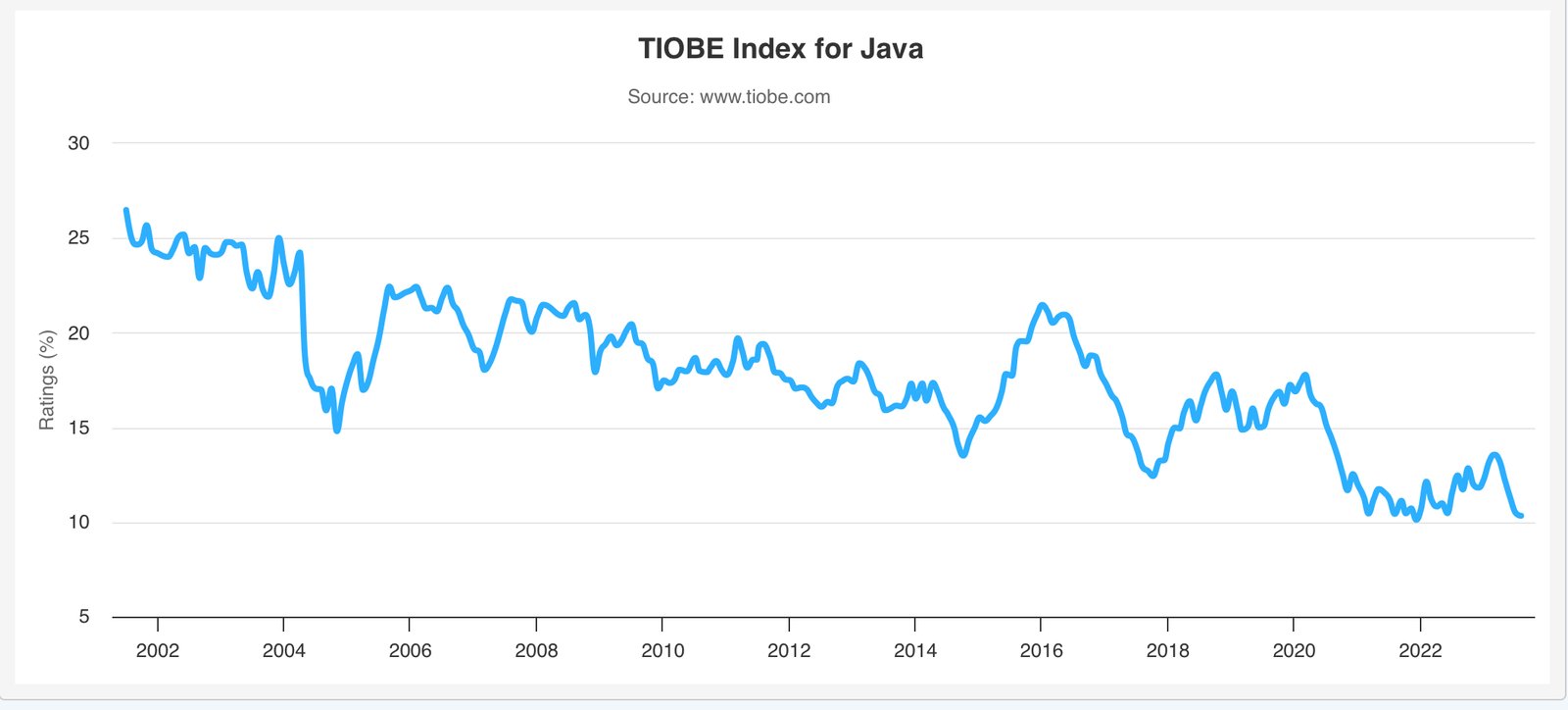 Java is on the #1 position since 2001 (April 2020). It has been the most popular programming language for over 20 years.
Java is on the #1 position since 2001 (April 2020). It has been the most popular programming language for over 20 years.
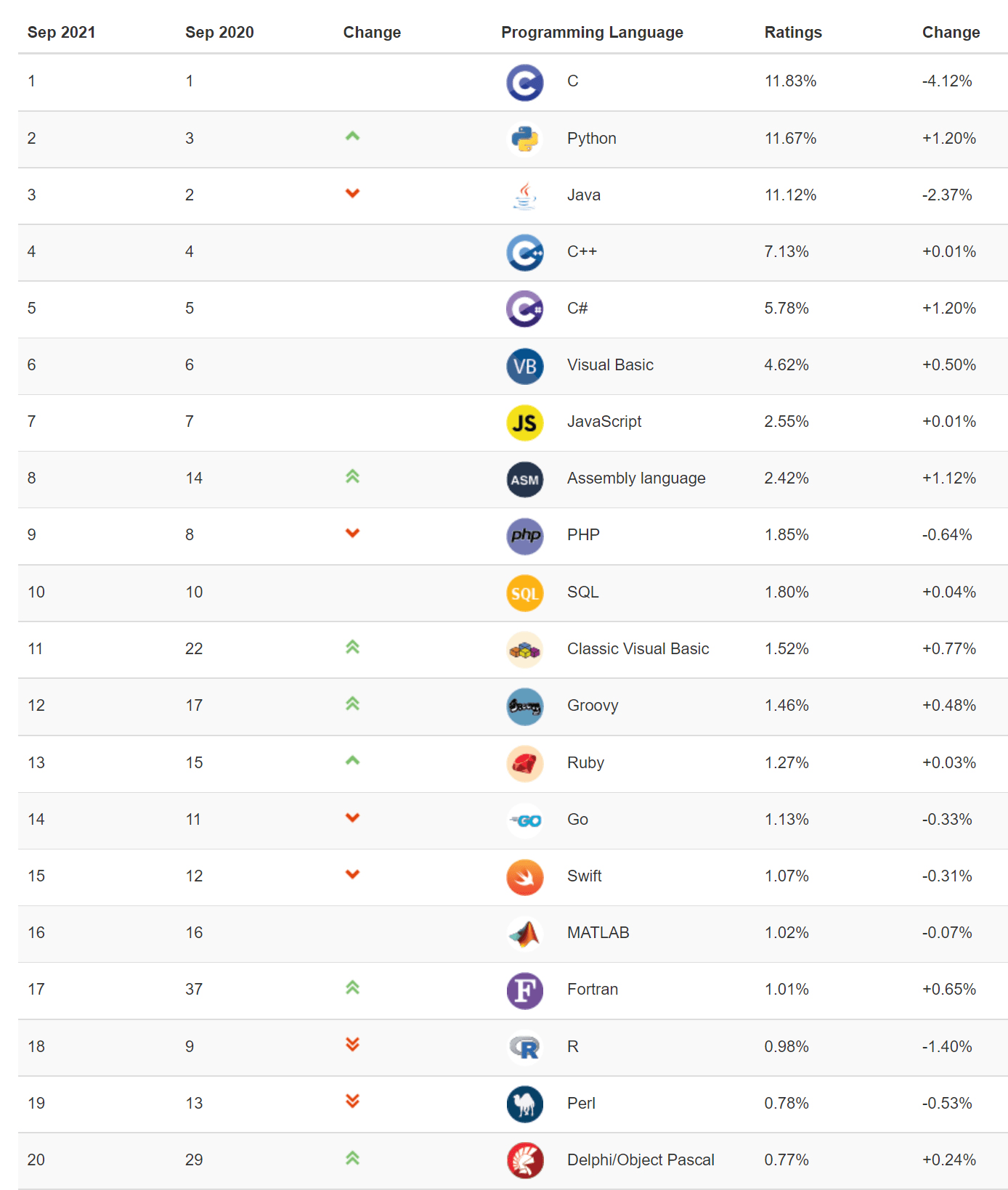 TIOBE Index suggests that Java remains one of the high-demand programming languages, after C and Python.
TIOBE Index suggests that Java remains one of the high-demand programming languages, after C and Python.
Current State and Overview of Java’s Current Popularity and Usage.
Java remains the most popular programming language and also in robot programming language for good reason. Java full stack is mostly pursued by teenagers, which are provide by institutes like First Bit Solutions. Java a Robust Programming Language.
1. Widespread Use
As of 2021, Java is used by over 3 billion devices worldwide. Companies like Google, Amazon, and Netflix all rely on Java to build and maintain their systems.
Consider the following:
- Android apps are primarily developed using Java, making it the foundation for millions of applications available on the Google Play Store.
- Many of Netflix‘s backend services responsible for content delivery, recommendation algorithms, user authentication, and more are developed using Java.
- Amazon Web Services (AWS), the leading cloud computing platform, offers a wide range of services that are often underpinned by Java-based technologies.
As an open-source, object-oriented language, Java is also free to download and use. This has allowed it to become a staple of computer science education. Students and professionals alike can easily learn and work with Java.
2. Growing Community
Java has a very large community of developers. This means there are many resources, libraries, and tools available. It also results in continuous improvements to the language.
The Java Community Process, which includes major companies like Google and Microsoft, helps evolve Java to meet modern needs. Regular updates keep Java secure, robust, and relevant.
3. Abundant Jobs
There is a high demand for Java developers. A search for “Java developer” on Indeed returns over 100,000 jobs. Java skills are needed across many industries.
Furthermore, its applicability isn’t confined to a single sector. For instance:
- Within the finance industry, financial institutions actively seek future scope of Java developers to build robust trading platforms and manage intricate financial systems.
- In the healthcare sector, Java expertise is invaluable in developing secure and efficient electronic health record systems.
This widespread demand illustrates Java’s significant scope that spans a diverse range of sectors, making its mastery a skill of enduring relevance in today’s technology-driven landscape.
Advancements in Java
Java releases a new version every 6 months. Following this trend, as of March 2023, the most recent Java version is Java 20. Java 21 is set to be released in September 2023. Notably, Java 17, launched in September 2021, remains the latest long-term support (LTS) version.
In the past, Java release cycles extended up to 3-5 years, but now they’ve shifted to shorter intervals for increased innovation and agility. This approach means Java 22 can be expected in March 2024, and the cycle continues.
 Java releases a new version every 6 months.
Java releases a new version every 6 months.
Java 21
Java 21, set for release on September 19, 2023, marks Oracle’s upcoming long-term support (LTS) release. The version introduces 15 significant features:
- String Templates (Preview): Simplifies dynamic string construction.
- Sequenced Collections: Efficiently processes sequences of elements in collections.
- Generational ZGC: Advances garbage collection for improved memory management.
- Record Patterns: Enhances data extraction with concise patterns. Also algorithms in data structure are reason to record patterns.
- Pattern Matching for the switch: Improves code clarity in switch statements.
- Foreign Function & Memory API (Third Preview): Safer interaction with native code and memory.
- Unnamed Patterns and Variables (Preview): Introduces anonymous patterns and variables.
- Virtual Threads: Offers an alternative approach to threads for performance.
- Unnamed Classes and Instance Main Methods (Preview): Introduces anonymous classes and instance main methods.
- Scoped Values (Preview): Automates restoration of previous states for resource management.
- Vector API (Sixth Incubator): Advances support for vector operations.
- Deprecate Windows 32-bit x86 Port for Removal: Marks deprecation of the 32-bit x86 port for removal.
- Prepare to Disallow Dynamic Loading of Agents: Enhances security by restricting dynamic loading.
- Key Encapsulation Mechanism API: Introduces cryptographic key encapsulation.
- Structured Concurrency (Preview): Introduces structured concurrency constructs.
Java 20
Java 20 was released by Oracle on March 21, 2023. It’s the latest upgrade to standard Java. This version introduces new features that are either still in the experimental stage or are preview versions.
Seven features have been confirmed for Java 20, which involve virtual threats, vector API proposal, Structured concurrency, scoped values, foreign function & memory API, record patterns, and pattern matching.
- Virtual threads, poised to revolutionize concurrency, are joined by a vector API proposal that accentuates performance optimization.
- Structured concurrency provides a paradigm for managing asynchronous tasks.
- The inclusion of scoped values augments safety, followed by the foreign function and memory API, enabling seamless native code interaction.
- Record patterns and pattern matching for switch statements and expressions introduce clarity to code organization.
- Last but not least, the vector API proposal aims to bolster parallelism in computation.
Java 20 encapsulates a diverse array of innovations, showcasing its commitment to adaptability and empowering developers to craft more efficient and expressive code.
Java 17
Java 17, launched in September 2021, is a significant version known as a long-term support (LTS) release. It offers various improvements and features:
- Sealed Classes: This feature allows developers to control which classes can be subclasses of a given class, enhancing encapsulation and improving maintainability.
- Pattern Matching for Switch: Java 17 extends pattern matching to switch statements, streamlining code and making it more readable.
- Foreign Function & Memory API: This addition facilitates interaction with native code and memory, enhancing performance and integration with native libraries.
- Strong Encapsulation of JDK Internals: Java’s internal APIs are better encapsulated, boosting security and preventing unauthorized access.
- Deprecation of Applet API: The outdated Applet API is deprecated to promote modern web technologies.
- Sealed Types (Preview): A complement to sealed classes, sealed types control the types that can be used as type arguments, enhancing type safety.
These features improve security, performance, and developer productivity, making Java 17 a compelling choice for long-term projects.
Case study: ShopEasy’s usage of Java 17, Java 20, and Java 21 to enhance their e-commerce platform’s performance, security, and maintainability.
Java 17:
In December 2021, ShopEasy, an e-commerce platform, began to face difficulties maintaining and securing its online store due to unauthorized code changes.
ShopEasy then upgraded to Java 17 which provided sealed classes and stronger encapsulation. This led to resolving ShopEasy’s security issues and simplifying codebase management.
Java 20:
In mid-2023, ShopEasy’s high customer traffic strained its system, causing slow performance. Handling concurrent tasks and integrating new features became a bottleneck.
As a result, the platform switched to Java 20’s virtual threads and structured concurrency that enabled ShopEasy to handle more customers at once without slowing down.
Java 21:
As the online store expanded, handling increasing data volumes became a challenge. To process data efficiently and maintain high performance, ShopEasy is now planning to upgrade Java 21’s vector API and pattern matching.
This will help the platform manage things better behind the scenes and make their store smoother for customers.
Future scope of Java
Java, currently the fifth most popular programming language worldwide, has firmly established itself as a driving force in the tech landscape.
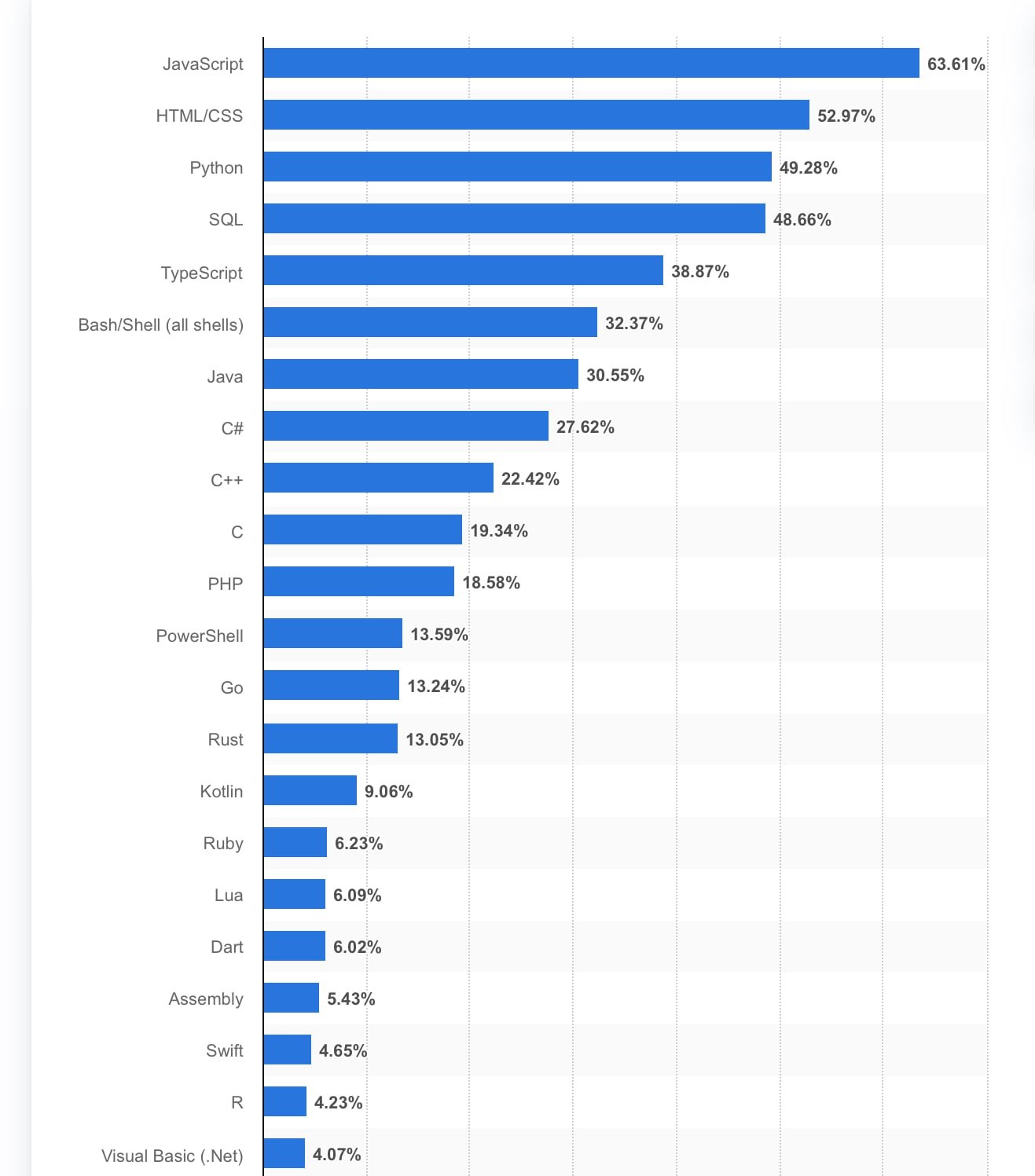
The future scope of Java programming language is evident as:
- Amazon’s 1,298,000 employees, entrust Java for their software development needs.
- Google’s team of 135,301 professionals focuses on Android development, a testament to Java’s role in shaping the mobile world.
- Other prominent organizations, including Zendesk Inc., are yielding revenues ranging from 200 million to 1000 million, using Java.
With a huge talent pool, enterprise adoption, Android’s popularity, and constant innovation, future scope of Java will continue to reign as a top programming language for many years to come. The future remains bright for this robust and powerful language.
Job Market and Career Opportunities
A fact highlighted by Stack Overflow’s 2021 report, for the ninth consecutive year, a staggering 64.96% of respondents considered Java as their top choice, attesting to its enduring popularity and unwavering demand.

US developer 2028 job forecast
As the US developer 2028 job forecast suggests, there will be a rise of 284,100 jobs (21%) for software developers and 20,900 jobs (12%) for web developers by the year 2028.
Additionally, the TIOBE index has ranked Java as the most favored programming language, since over 90% of Fortune 500 companies choose Java for their everyday operations. With that said, let’s consider the emerging roles in future scope of Java.
Emerging Job Roles in Java
1. Java Developer: The future scope of Java programming lies in Java Developers. Their roles are expanding from mobile applications to middleware systems. Core Java, Spring, JavaScript, HTML, CSS, and Database expertise is crucial. Academies like ITpreneur offer courses, opening pathways to careers like web developer, tester, application developer, and more.
2. DevOps Engineer: Future Java prospects for DevOps Engineers involve merging DevOps practices with Java app development. Focus on continuous integration and microservices is essential. The role includes frequent production code releases, testing, and crafting production-ready Java apps.
3. Solution Architect: Solution Architects shape technical visions and solutions for organizations. They tackle challenges, design solutions, and oversee their implementation. Their indispensability stems from adapting solutions to present environments and technical landscapes.
4. Mobile App Development: A promising path in future scope of Java careers is Mobile App Development. These professionals enhance user experiences by connecting apps to the cloud. This role spans industries like retail, healthcare, e-commerce, and more, where customized mobile apps drive business growth.
5. Java Web Development: Java Web Development thrives with individuals skilled in web technologies and frameworks.
The future of Java developers in India is bright, as seen with projects like Digital India. Strong technical proficiency is crucial in this dynamic field.
Skills To Enhance Your Career Prospects as a Java Developer
Key Skills for the future scope of Java and enhancing your prospects as a Java Developer invovle:
1. JSP and Servlet:
To harness the future scope of Java, mastering JSP and Servlet is paramount. These skills empower you to navigate user interfaces seamlessly. JSP facilitates user input handling and data retrieval from databases, while Servlets excel in gathering user data and presenting essential records.
2. Hibernate and Spring Framework:
As Java’s landscape evolves, expertise in Hibernate and Spring Framework becomes essential for staying ahead. Spring Framework’s integration capabilities and annotation-style configuration offer a competitive edge.
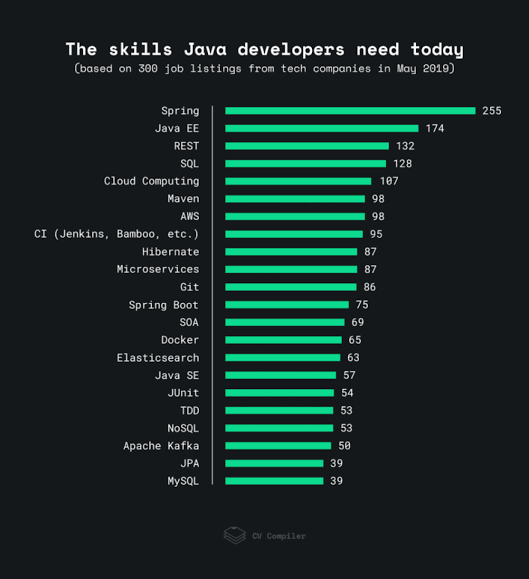
Hibernate’s automatic table creation and optimization of queries contribute to efficient database interactions, aligning perfectly with Java’s future trajectory.
3. DevOps Tools and Containers Proficiency:
Position yourself for Java’s future by becoming proficient in DevOps Tools and Containers. Containers efficiently manage resources and facilitate smooth application deployment, contributing to a robust future scope of Java.
In-demand among Java developers, this expertise reduces development time, elevates productivity, and ensures swift issue resolution during crucial production stages.
The Rise of Kotlin and Impact on Java.
The rise of Kotlin, a modern programming language developed by JetBrains, is poised to impact the future scope of Java. As Kotlin gains more mainstream adoption, especially on Android, Java developers may feel pressure to learn it. However, Kotlin is interoperable with Java and runs on the JVM, so Java skills will still be relevant.
Kotlin code can call Java code and vice versa. Libraries and frameworks written in Java are still usable from Kotlin. This means Java developers can leverage their existing knowledge and benefit from Kotlin’s modern language features.
On Android, Kotlin is now the preferred language for developing apps. However, the Android framework and SDK are still largely built on Java. For server-side development, Spring Boot – the popular Java framework – officially supports Kotlin. But again, much of Spring is written in Java, and Java skills translate well.
To make it straightforward, while Kotlin may chip away at future scope of Java’s popularity, especially for mobile development, Java itself isn’t going anywhere soon. Its widespread use, compatibility with Kotlin, and importance to enterprise software mean strong career opportunities will remain for Java developers. Kotlin is poised to impact Java, but not replace it.
Why Should I Start Learning to Program with Java?
If you want to become a professional developer, learning Java is a perfect place to start. Here’s why:
- Versatility: Java offers diverse applications, from streaming apps to web, mobile, big data, IoT, blockchain, and AI. It’s a versatile choice with real-world relevance.
- Future-Proof: Java’s role in FaaS, serverless apps, and Android OS ensures its place in the future of development.
- Progressive Updates: Java keeps up with the latest trends, updating every six months to stay current.
- Friendly Learning Curve: While not the easiest, Java’s value and future prospects make it worth learning, especially for a promising career path.
The demand and future scope for Java is high. Java developers are in high demand in the job market. Learning Java will open you up to many career opportunities as a software engineer or web developer.
Salary Prospect
According to Glassdoor, the average Java developer in the US earns anywhere between $96,000 to $99,000 per year. Whereas, for junior developers, the approximate salary is $80, 533 per year.
Experienced developers with 5-9 years of experience can make $103,000 per year, 31% higher. The job outlook is also quite positive. The US Bureau of Labor Statistics projects a 22% growth for software developers between now and 2026, much faster than average.

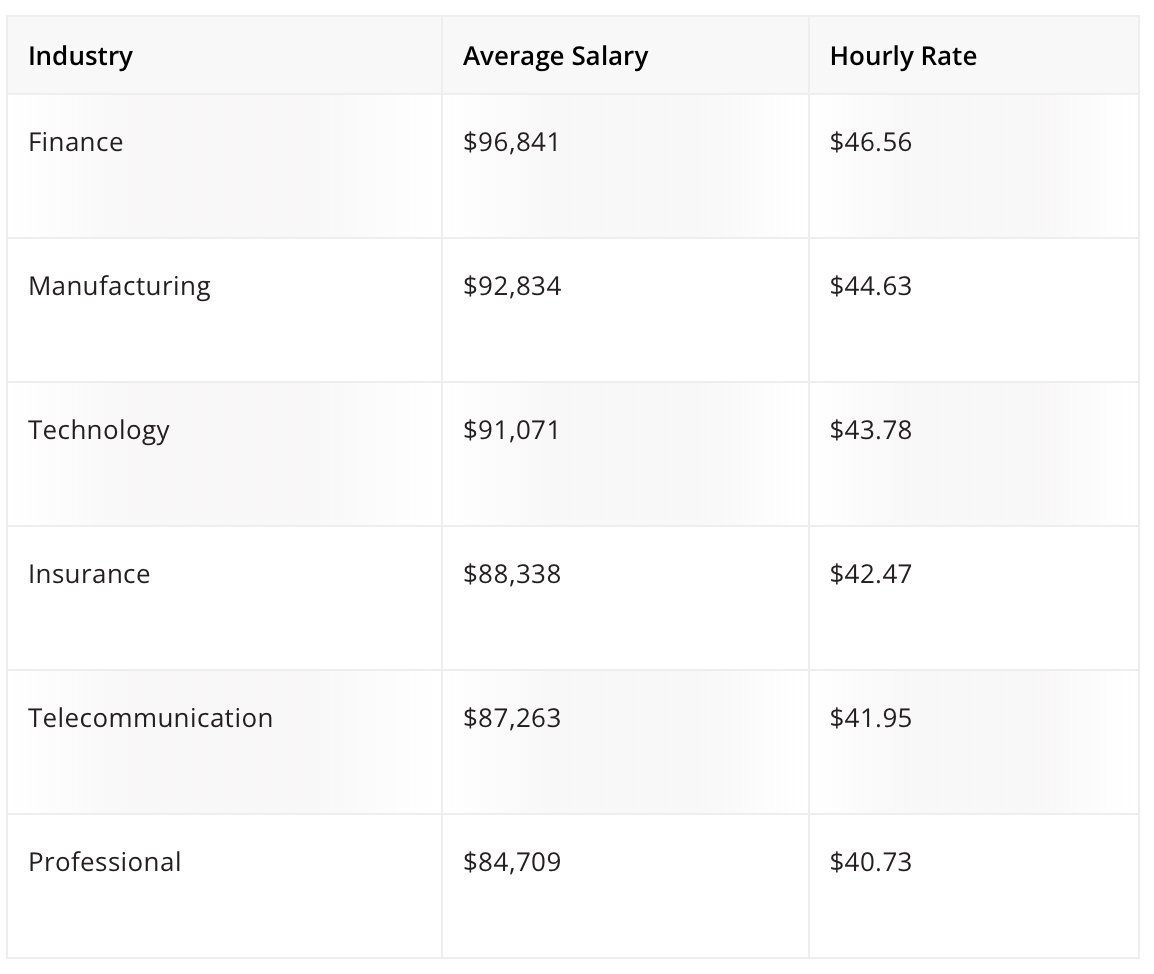 Highest Paying Industries for Java Developers
Highest Paying Industries for Java Developers
No matter which direction you go, Java skills are versatile and open up many opportunities. Java’s popularity also means job security – it’s used by many major companies so there’s no shortage of jobs. Keep reading IT blogs.
Conclusion
So there you have it. Java is not going anywhere anytime soon. With its wide range of capabilities, massive ecosystem, and dedicated community, future scope of Java will continue to dominate for years to come.
As an enterprise and web developer, keeping your Java skills sharp is a smart career move. Whether you’re just learning to code or have decades of experience, enhance your skills with ITpreneur, to get a better pay scale. The future is bright for Java and the developers who love it. Keep calm and code on!

